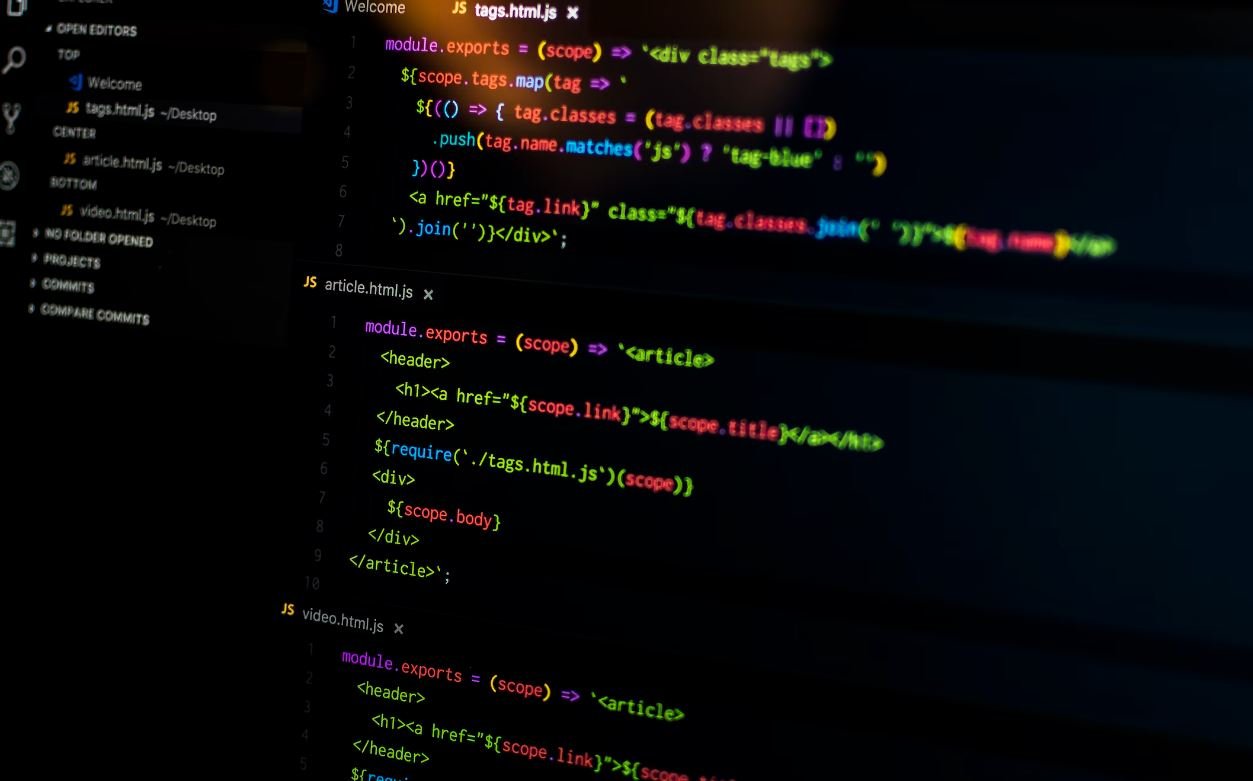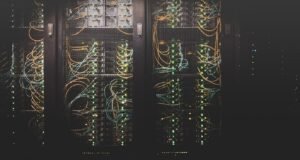AI Can Be Dangerous
In recent years, artificial intelligence (AI) has made significant advancements and has become an integral part of our everyday lives. From voice assistants like Siri and Alexa to self-driving cars, AI is revolutionizing various industries. However, as with any technology, there are potential risks and dangers associated with AI that need to be addressed.
Key Takeaways
- AI advancements have revolutionized multiple industries.
- However, there are potential risks and dangers associated with AI.
- Addressing AI’s potential dangers is vital for its responsible development.
One of the main concerns surrounding AI is the potential loss of jobs due to automation. With AI becoming increasingly sophisticated, there is a risk that many jobs currently performed by humans could be replaced by machines. This could lead to unemployment and economic disruption. *It is essential to prioritize upskilling and reskilling programs to ensure individuals can adapt and thrive in the AI-driven economy.*
Another significant danger of AI is the potential for biased decision-making. Since AI algorithms are created by humans, they can inherit the biases and prejudices of their creators. This can result in biased decisions in areas such as hiring, lending, and criminal justice. *Addressing algorithmic bias is crucial to ensure fairness and equity in AI applications.*
The ethical implications of AI are also of great concern. AI systems have the potential to invade privacy and violate individuals’ rights if not properly regulated. Additionally, the use of AI in military applications raises questions about autonomous weapons and ethical warfare. *Safeguarding privacy rights and establishing ethical guidelines for AI applications are imperative.*
AI Dangers: Statistics and Data
Let’s take a closer look at some alarming statistics and data regarding AI dangers:
| Statistic | Data |
|---|---|
| Jobs at risk of automation | Approximately 800 million jobs worldwide by 2030.¹ |
| Algorithmic bias in hiring | AI software preferentially selects male candidates over female candidates.² |
AI can also pose a significant threat to cybersecurity. As AI becomes more advanced, cybercriminals can take advantage of this technology to launch sophisticated attacks. AI-powered bots can mimic human behavior, making it difficult to distinguish between legitimate users and malicious actors. *Strengthening cybersecurity measures and developing AI defenses are critical in staying ahead of cyber threats.*
Furthermore, AI systems can be prone to manipulation and hacking. Deepfake technologies, for example, can create highly realistic but fabricated videos and images. These can be used to spread disinformation, deceive individuals, and manipulate public opinion. *Combating AI-driven misinformation requires increased awareness and robust fact-checking mechanisms.*
Conclusion
While the potential of AI to transform industries and improve lives is undeniable, it is crucial to be aware of the potential dangers associated with this technology. Addressing these risks is essential to ensure responsible AI development and mitigate any negative impacts. Through proper regulation, ethical guidelines, and ongoing research, we can harness the benefits of AI while minimizing its potential dangers.

Common Misconceptions
AI Can Be Dangerous
Many people have certain misconceptions about the dangers of artificial intelligence (AI). These misconceptions are often fueled by science fiction movies and media sensationalism. It is important to separate fact from fiction when examining the potential dangers of AI.
- AI will take over the world and make humans irrelevant
- AI will become self-aware and turn against its creators
- AI is inherently evil and will purposefully harm humans
AI poses an existential threat to humanity
There is a commonly held belief that AI poses a significant existential threat to humanity. However, it is important to note that AI systems today are designed to perform specific tasks and are far from being able to achieve general intelligence. The idea that AI will surpass and harm humanity is based more on speculation than any concrete evidence.
- AI systems lack human-like consciousness and self-awareness
- AI algorithms are created by humans and can be controlled
- Ethical considerations and regulations can be implemented to prevent misuse
AI will lead to widespread unemployment
It is a misconception that the widespread adoption of AI will inevitably lead to mass unemployment. While AI has the potential to automate certain tasks, it also has the capacity to create new job opportunities. Instead of replacing humans, AI is more likely to assist and augment human capabilities, leading to increased productivity and innovation.
- AI can handle repetitive and mundane tasks, allowing humans to focus on more creative and complex work
- AI can create new industries and job roles that do not exist today
- Jobs will evolve and require new skills to work alongside AI systems
AI is foolproof and can solve all problems
While AI has made significant advancements in various domains, it is not infallible. AI systems are only as good as the data they are trained on and the algorithms they employ. The misconception that AI can solve all problems stems from an overestimation of the capabilities of current AI technologies.
- AI systems are limited by the data they are trained on and may not generalize well to new situations
- AI algorithms can be biased and make incorrect decisions without proper monitoring
- AI is a tool and still requires human oversight and intervention
AI has human-like intelligence
It is a common misconception that AI possesses human-like intelligence. While AI can be programmed to mimic human behaviors and perform specific tasks, it lacks the cognitive abilities and consciousness that define human intelligence. AI operates based on algorithms and statistical analysis, without true understanding or consciousness.
- AI lacks human emotions and subjective experiences
- AI cannot truly comprehend or have consciousness
- AI cannot spontaneously generate new ideas or create original works

The Market Size of Artificial Intelligence
According to market research data, the adoption of artificial intelligence (AI) technologies is rapidly growing across various industries. In recent years, the global AI market has witnessed significant expansion, with an increasing number of companies integrating AI into their operations. The table below illustrates the market size of AI in different sectors.
| Sector | Market Size (in billions of USD) |
|---|---|
| Healthcare | 17.8 |
| E-commerce | 12.4 |
| Automotive | 9.6 |
| Finance | 8.9 |
| Manufacturing | 7.2 |
AI’s Impact on Job Market
As AI continues to advance, there are growing concerns about its potential impact on job roles. The following table presents the projected rise in demand for job profiles related to AI and the corresponding decline in others.
| Job Profile | Projected Demand Increase | Projected Decline |
|---|---|---|
| Data Scientists | 27% | None |
| Customer Service Representatives | 12% | 5% |
| Software Developers | 20% | 8% |
| Drivers | None | 22% |
| Marketing Managers | 14% | 6% |
Advancements in AI Technologies
Artificial intelligence has seen remarkable advancements in recent years, enabling machines to perform complex tasks that were once thought to be exclusive to humans. The table below highlights some significant AI technologies and their respective capabilities.
| AI Technology | Capability |
|---|---|
| Natural Language Processing (NLP) | Understanding and generating human language |
| Computer Vision | Object recognition and image analysis |
| Machine Learning | Automated learning and pattern recognition |
| Autonomous Robots | Performing tasks without human intervention |
| Speech Recognition | Converting spoken words into text |
The Dark Side of AI
While artificial intelligence offers numerous benefits, concerns regarding its potential dangers cannot be overlooked. The following table sheds light on some of the risks associated with AI technologies.
| Risk | Consequences |
|---|---|
| Job displacement | Increased unemployment rates |
| Algorithmic bias | Reinforcement of social inequalities |
| Autonomous weapons | Potential for misuse and loss of control |
| Privacy invasion | Unwanted surveillance and data breaches |
| Moral dilemmas | Decisions made by AI systems without ethical considerations |
AI in Telecommunications
The telecommunications sector is harnessing the power of AI to enhance network performance and provide more personalized services. The table below displays the application of AI in different areas of telecommunications.
| Area | AI Application |
|---|---|
| Network Optimization | Automated network configuration and self-healing systems |
| Customer Service | Chatbots for real-time assistance and issue resolution |
| Revenue Assurance | Fraud detection and prevention algorithms |
| Data Analytics | Extracting insights from vast amounts of customer data |
| Personalized Marketing | Targeted advertisements and tailored promotions |
AI and Cybersecurity
With the rise in cyber threats, AI is playing a crucial role in bolstering cybersecurity defenses. The table below showcases the utilization of AI in various aspects of cybersecurity.
| Cybersecurity Domain | AI Application |
|---|---|
| Threat Detection | Anomaly detection and behavior analytics |
| Malware Analysis | Automated identification of malicious software |
| Authentication | Biometric and facial recognition systems |
| Vulnerability Assessment | Scanning and identifying system weaknesses |
| Incident Response | AI-powered incident analysis and mitigation |
AI Investments by Tech Giants
Leading technology companies recognize the potential of AI and have made substantial investments in research, acquisitions, and development. The table below presents the total investments made by some of these tech giants.
| Company | Average Annual AI Investment (in billions of USD) |
|---|---|
| 16.4 | |
| Microsoft | 11.7 |
| IBM | 9.8 |
| Amazon | 8.3 |
| 7.6 |
AI in Education
Artificial intelligence is increasingly being incorporated into educational institutions to transform classrooms and optimize learning experiences. The table below highlights AI applications in the field of education.
| Application | AI Utilization |
|---|---|
| Personalized Learning | Adaptive learning platforms based on student progress |
| Virtual Assistants | Voice-activated assistants for answering student queries |
| Automated Grading | AI algorithms for evaluating assignments and exams |
| Smart Content | AI-generated educational content and resources |
| Learning Analytics | Data-driven insights for educators to enhance teaching methods |
Automobile Manufacturers Embracing AI
The automotive industry is leveraging the power of AI to revolutionize transportation and enhance vehicle safety. The table below showcases the integration of AI in automobiles by renowned manufacturers.
| Manufacturer | AI Features |
|---|---|
| Tesla | Autonomous driving capabilities and over-the-air updates |
| BMW | Voice-activated personal assistant and gesture control |
| Audi | AI-powered predictive maintenance and traffic optimization |
| Toyota | Self-driving technology and collision avoidance systems |
| Mercedes-Benz | Intelligent navigation and active safety features |
Artificial intelligence is rapidly evolving and has immense potential to reshape various sectors. While it brings many advantages, AI also presents certain risks and challenges. It is crucial for organizations, policymakers, and individuals to navigate this technology carefully to leverage its benefits while addressing potential concerns. With further research, ethical guidelines, and proactive measures, the transformative power of AI can be harnessed responsibly to create a safer and more prosperous future.
Frequently Asked Questions
What is artificial intelligence?
Artificial intelligence (AI) refers to the development of computer systems that are capable of performing tasks that normally require human intelligence.
How does AI pose a potential danger?
AI can be dangerous due to various reasons. One concern is that as AI systems become more autonomous and powerful, they could potentially cause harm or make decisions that may not align with human values or ethics.
What are some potential risks associated with AI?
Some potential risks include misuse of AI technology, loss of jobs due to automation, biases embedded in AI systems, cybersecurity threats, and the potential for AI systems to become out of control.
Can AI be intentionally used to cause harm?
Yes, AI can be intentionally used to cause harm. In the wrong hands, AI technology can be used for malicious purposes such as cyberattacks, misinformation campaigns, and surveillance.
What steps are being taken to address the dangers of AI?
Various organizations and researchers are actively working on developing ethical guidelines, regulations, and safety measures to mitigate the risks associated with AI. Additionally, discussions on responsible AI development and public awareness campaigns are being held to educate people about the potential dangers.
Can AI become self-aware and take over the world?
Current AI systems are not capable of becoming self-aware or taking over the world as portrayed in science fiction. However, it is essential to develop robust safeguards to prevent any unintended consequences as AI technology advances.
Are there any ethical concerns with AI?
Yes, there are ethical concerns with AI. Some of the key concerns include issues surrounding privacy, bias in decision-making algorithms, accountability for AI actions, and the potential impact on employment and societal norms.
What are the benefits of AI despite the potential dangers?
AI has the potential to revolutionize numerous industries, improve efficiency and productivity, enhance healthcare diagnostics and treatment options, enable autonomous vehicles, facilitate personalized recommendation systems, and aid in scientific research.
How can we ensure AI is developed responsibly?
To ensure responsible development, AI should be designed with strict ethical principles in mind, transparency in algorithms, active involvement of diverse stakeholders in decision-making, continuous monitoring for biases, and compliance with regulatory frameworks.
Should we be afraid of AI?
While it is important to recognize the potential risks and take necessary precautions, there is no need to be unduly afraid of AI. It is more important to focus on responsible development practices, ethical considerations, and finding ways to maximize the benefits while minimizing the risks.




